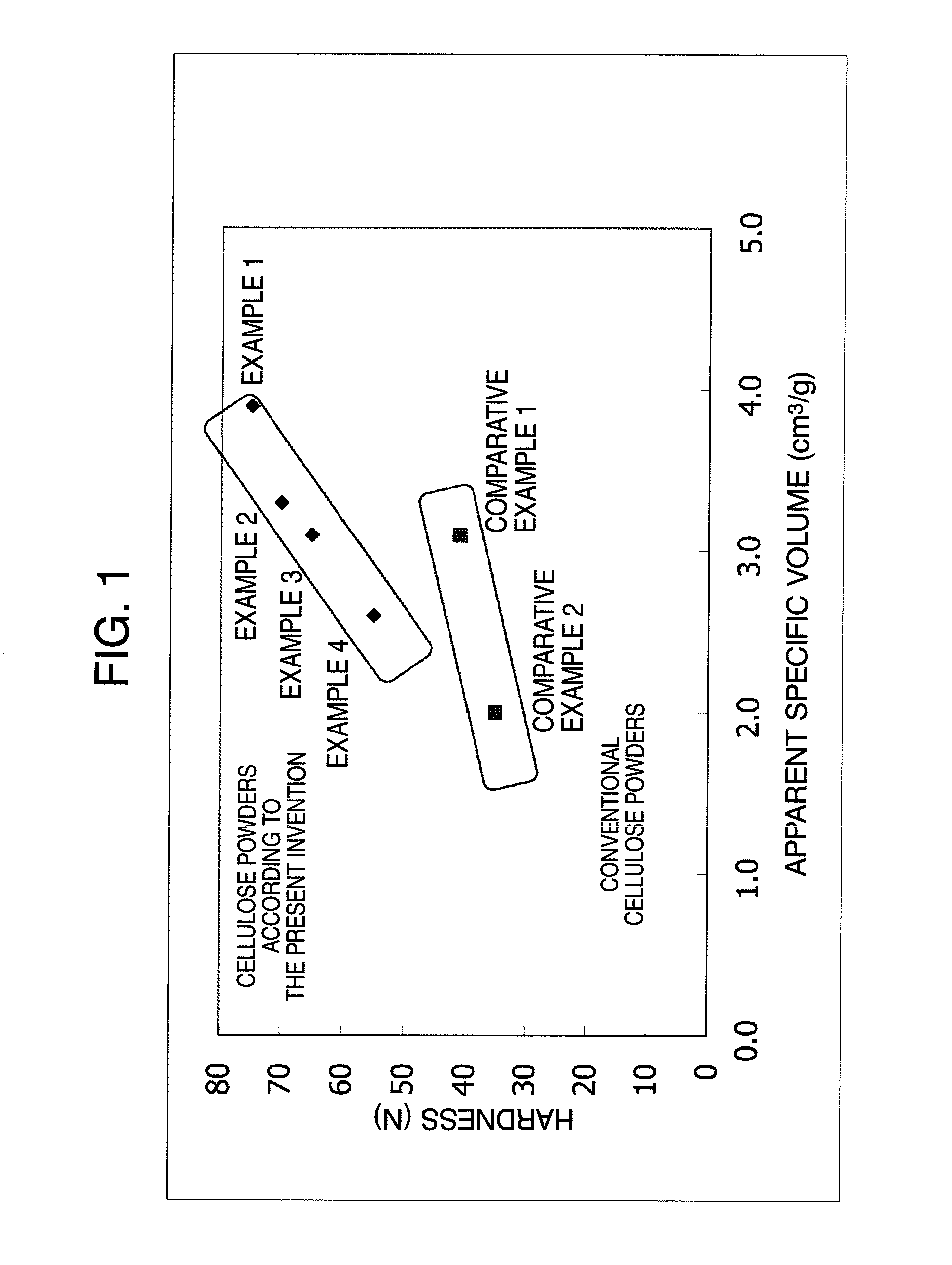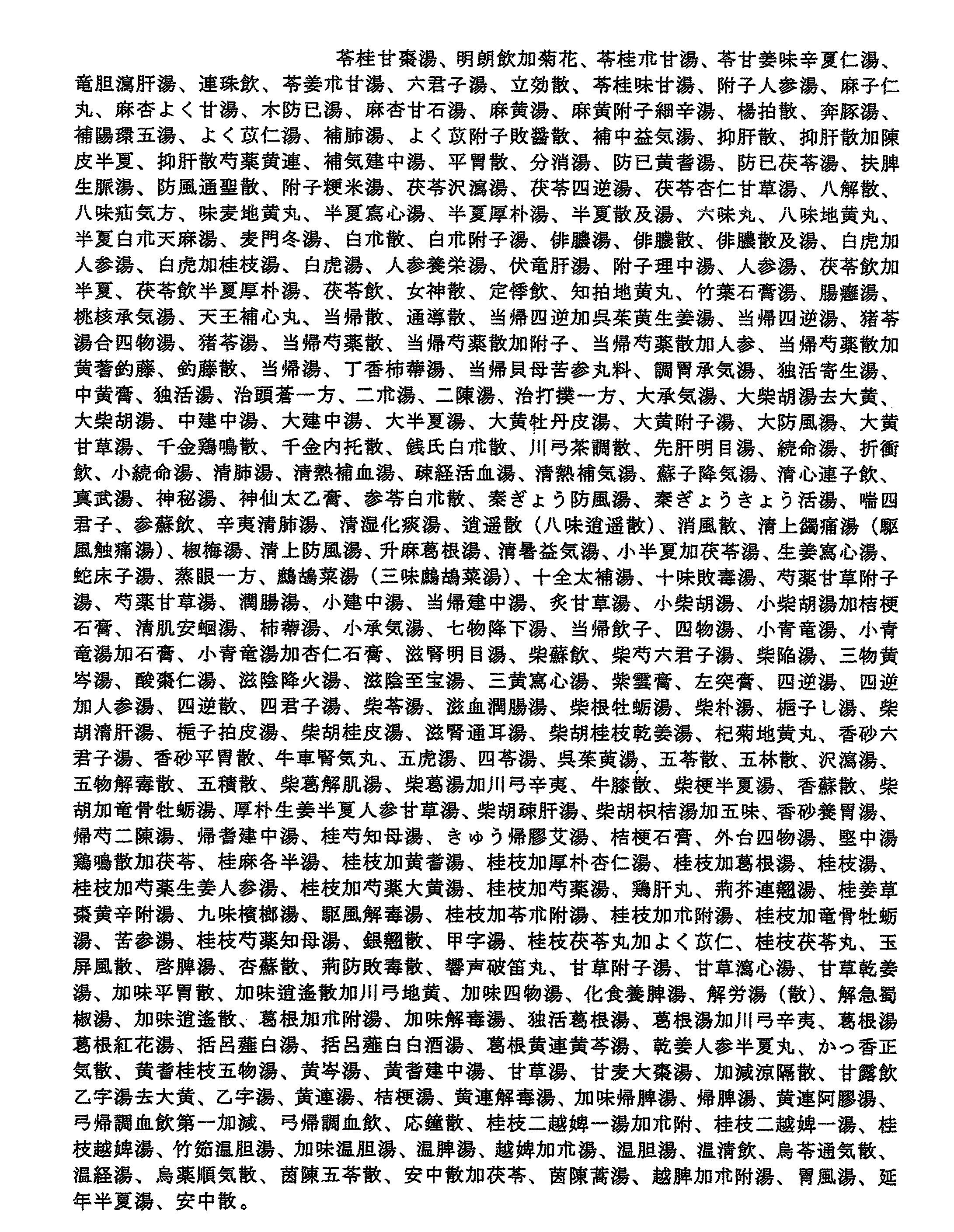Cellulose powder
- Summary
- Abstract
- Description
- Claims
- Application Information
AI Technical Summary
Benefits of technology
Problems solved by technology
Method used
Image
Examples
example 1
[0105]2 kg of a commercially available SP pulp (degree of polymerization: 1030, level-off degree of polymerization: 220) was shredded, and was added to 30 L of an aqueous solution of 0.05% hydrochloric acid. While the mixture was stirred (at a stirring rate of 234 rpm) with a low speed stirrer (manufactured by Ikebukuro Horo Kogyo Co., Ltd., 30 LGL reactor, blade diameter: about 30 cm), the pulp was hydrolyzed at 145° C. for 70 minutes. The resulting acid-insoluble residues were filtered with a suction funnel. The filtered residues were washed with 70 L of pure water 4 times, and were neutralized with aqueous ammonia. The residues were placed in a 90 L plastic bucket, and pure water was added. While the mixture was stirred (at a stirring rate of 500 rpm) with a three-one motor (manufactured by HEIDON, type BLh1200, 8 M / M, blade diameter: about 10 cm), a cellulose dispersion liquid having a concentration of 16% was prepared (pH: 7.8, IC: 55 μS / cm).
[0106]The cellulose dispersion liqui...
example 2
[0107]2 kg of a commercially available SP pulp (degree of polymerization: 1030, level-off degree of polymerization: 200) was shredded, and was added to 30 L of an aqueous solution of 0.08% hydrochloric acid. While the mixture was stirred (at a stirring rate of 234 rpm) with a low speed stirrer (manufactured by Ikebukuro Horo Kogyo Co., Ltd., 30 LGL reactor, blade diameter: about 30 cm), the pulp was hydrolyzed at 140° C. for 110 minutes. The resulting acid-insoluble residues were filtered with a suction funnel. The filtered residues were washed with 70 L of pure water 4 times, and were neutralized with aqueous ammonia. The residues were placed in a 90 L plastic bucket, and pure water was added. While the mixture was stirred (at a stirring rate of 500 rpm) with a three-one motor (manufactured by HEIDON, type BLh1200, 8 M / M, blade diameter: about 10 cm), a cellulose dispersion liquid having a concentration of 18% was prepared (pH: 7.5, IC: 60 μS / cm).
[0108]The cellulose dispersion liqu...
example 3
[0109]2 kg of a commercially available KP pulp (degree of polymerization: 1030, level-off degree of polymerization: 190) was shredded, and was added to 30 L of an aqueous solution of 0.10% hydrochloric acid. While the mixture was stirred (at a stirring rate of 234 rpm) with a low speed stirrer (manufactured by Ikebukuro Horo Kogyo Co., Ltd., 30 LGL reactor, blade diameter: about 30 cm), the pulp was hydrolyzed at 135° C. for 100 minutes. The resulting acid-insoluble residues were filtered with a suction funnel. The filtered residues were washed with 70 L of pure water 4 times, and were neutralized with aqueous ammonia. The residues were placed in a 90 L plastic bucket, and pure water was added. While the mixture was stirred (at a stirring rate of 500 rpm) with a three-one motor (manufactured by HEIDON, type BLh1200, 8 M / M, blade diameter: about 10 cm), a cellulose dispersion liquid having a concentration of 19% was prepared (pH: 7.5, IC: 50 μS / cm).
[0110]The cellulose dispersion liqu...
PUM
| Property | Measurement | Unit |
|---|---|---|
| Temperature | aaaaa | aaaaa |
| Length | aaaaa | aaaaa |
| Length | aaaaa | aaaaa |
Abstract
Description
Claims
Application Information
 Login to View More
Login to View More - R&D
- Intellectual Property
- Life Sciences
- Materials
- Tech Scout
- Unparalleled Data Quality
- Higher Quality Content
- 60% Fewer Hallucinations
Browse by: Latest US Patents, China's latest patents, Technical Efficacy Thesaurus, Application Domain, Technology Topic, Popular Technical Reports.
© 2025 PatSnap. All rights reserved.Legal|Privacy policy|Modern Slavery Act Transparency Statement|Sitemap|About US| Contact US: help@patsnap.com


